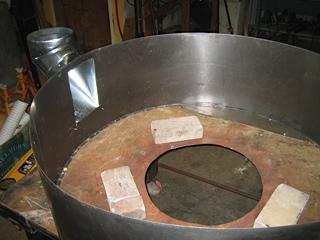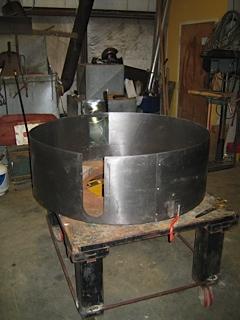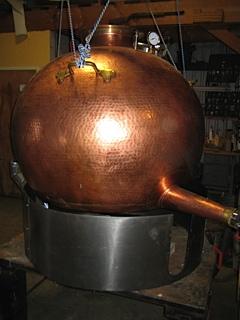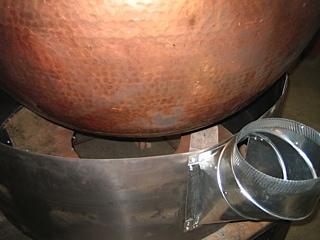| Burner Placement for Stills |
Many distillers, being familiar with steam jackets, want to enclose their combustion area in heavy brick surrounds. While this works with steam jackets, it does not work with direct fired burners. Burners need to be outside of the combustion area and project their flames into the area and on to the bottom of the still. The photo on the right shows a metal stand for the still, the skirt, and the burner port that the burner's flames will enter.
|
 |
| photo courtesy of Nick Cowles |
|
|
 |
| photo courtesy of Nick Cowles |
|
|
Stands need to be well constructed and easily handle the weight of the still and it's contents. The height of the stand is unimportant. As long as the entire stand, still, and any columns fit in your space, it will work. Burners can sit on the floor (concrete), though that is not ideal. Burners need fresh air flow under, up, and through the burner. This air flow provides oxygen to the burner and keeps wiring and/or sensors relatively cool. Burners should never be put up inside the combustion area. They project their flames into the combustion area. Burners should be placed about 12" away from the bottom of the still.
|
The photo on the right shows a still being test fitted on it's metal base and stand. Once it is determined the still fits and is stable, it can be removed and the inside of the skirt and the top of the metal table can be lined with ceramic fiber to help with efficientcy and protect the metal from warping due to the heat. If, for cosmetic reasons, the stand then needs to be bricked this can be done with the understanding that plenty of fresh air still needs to come under the burner and up through and into the burner port.
|
 |
| photo courtesy of Nick Cowles |
|
|
 |
| photo courtesy of Nick Cowles |
|
|
What goes in must come out. The photo on the left shows the large exhaust area that is used to vent the combustion gases. This is critical. If the combustion gases cannot easily exit the combustion area, new continuously arriving flame cannot easily enter and circulate. New air cannot be fed into the burner and the flame will become yellow, less efficient, longer, and produce more carbon dioxide. Not good or safe. Make sure all flue gases are collected and removed from the work area via a chimney or collection hood.
|
|